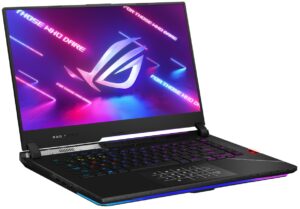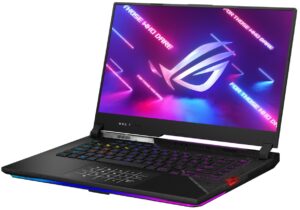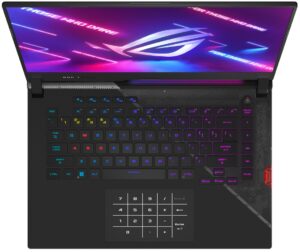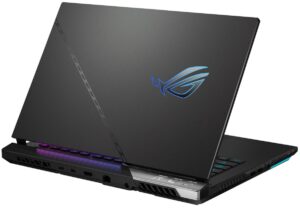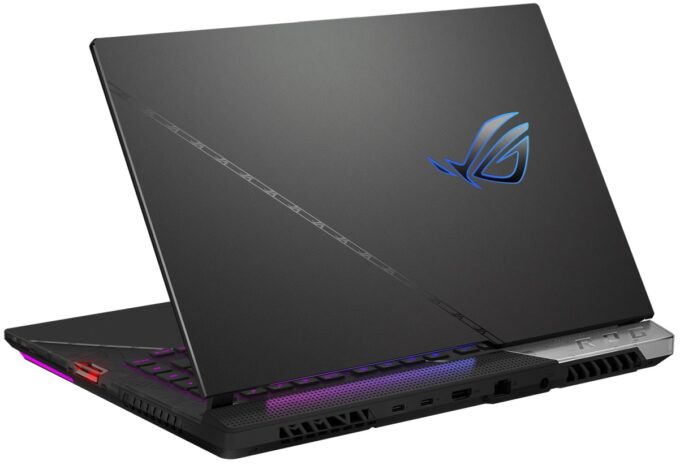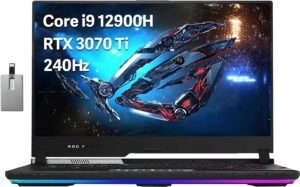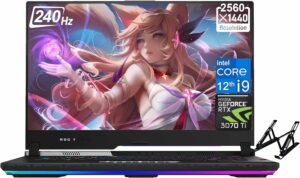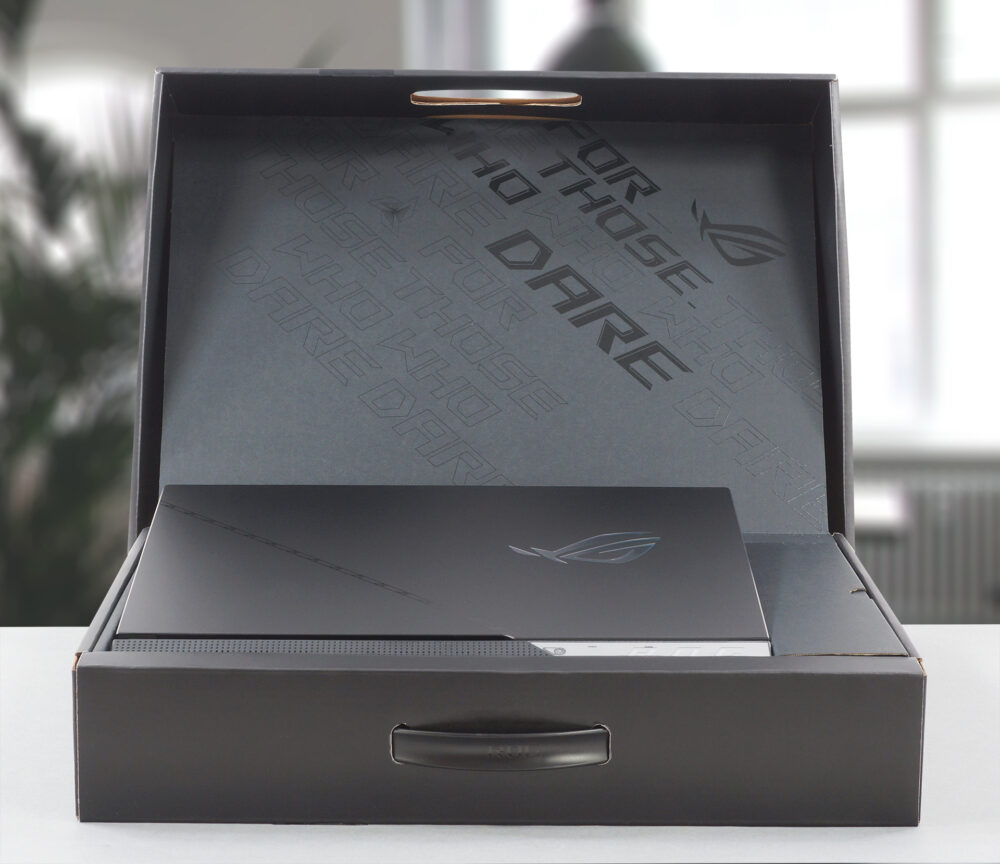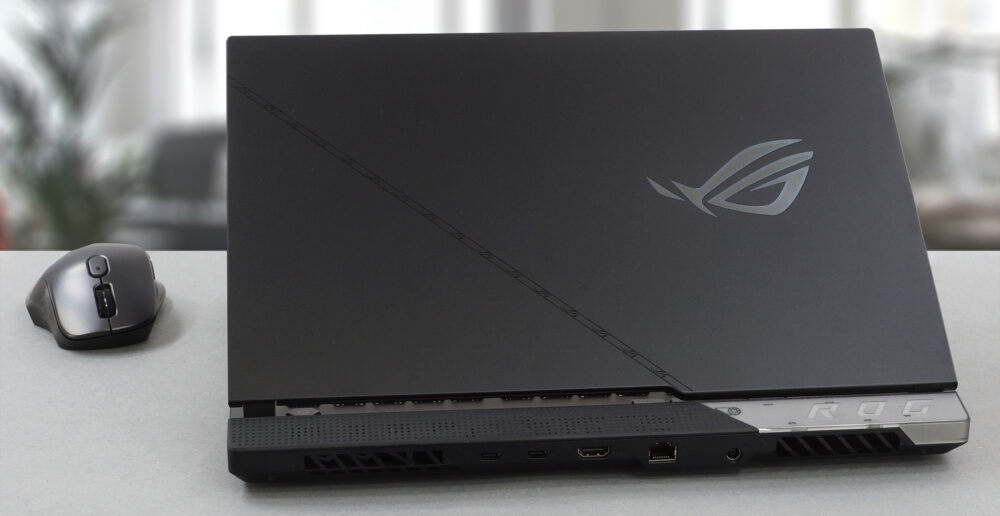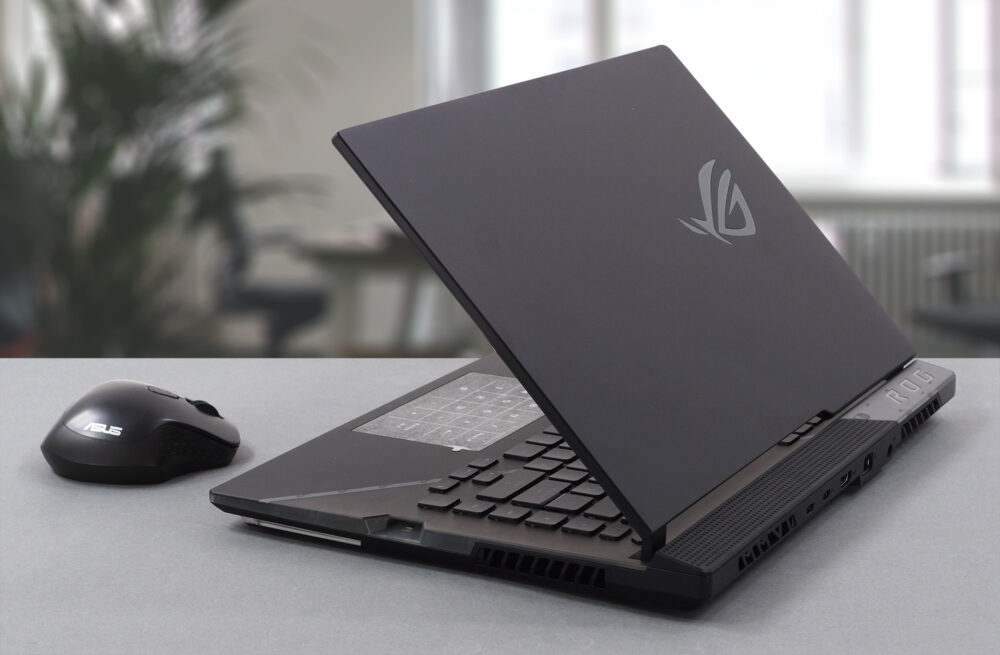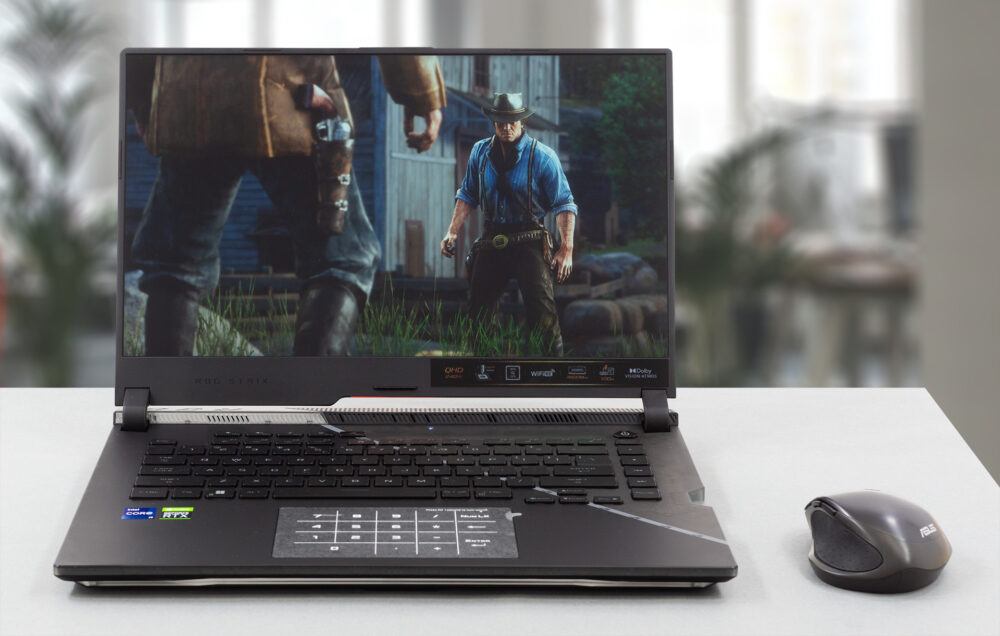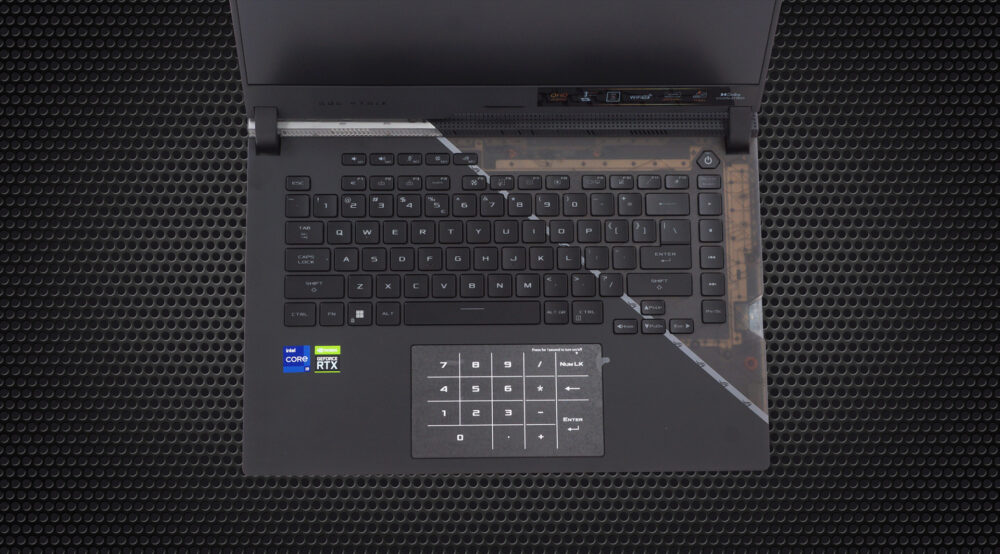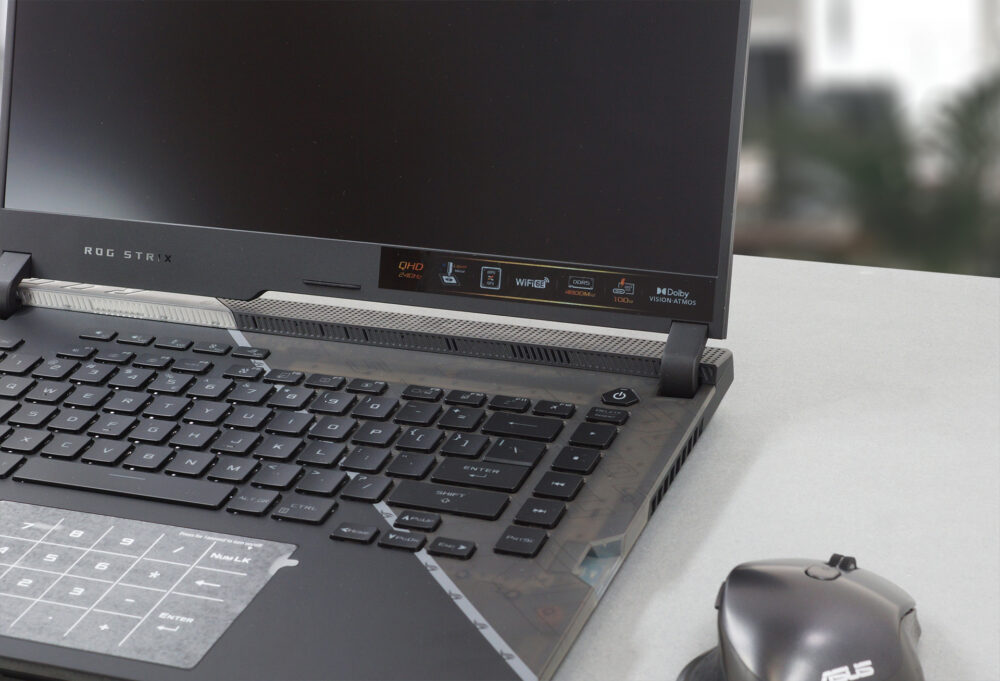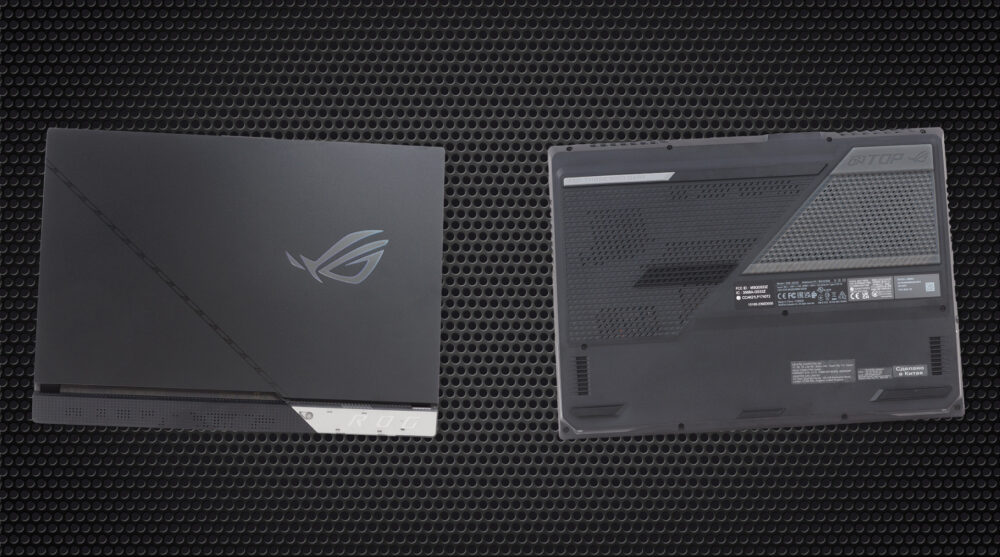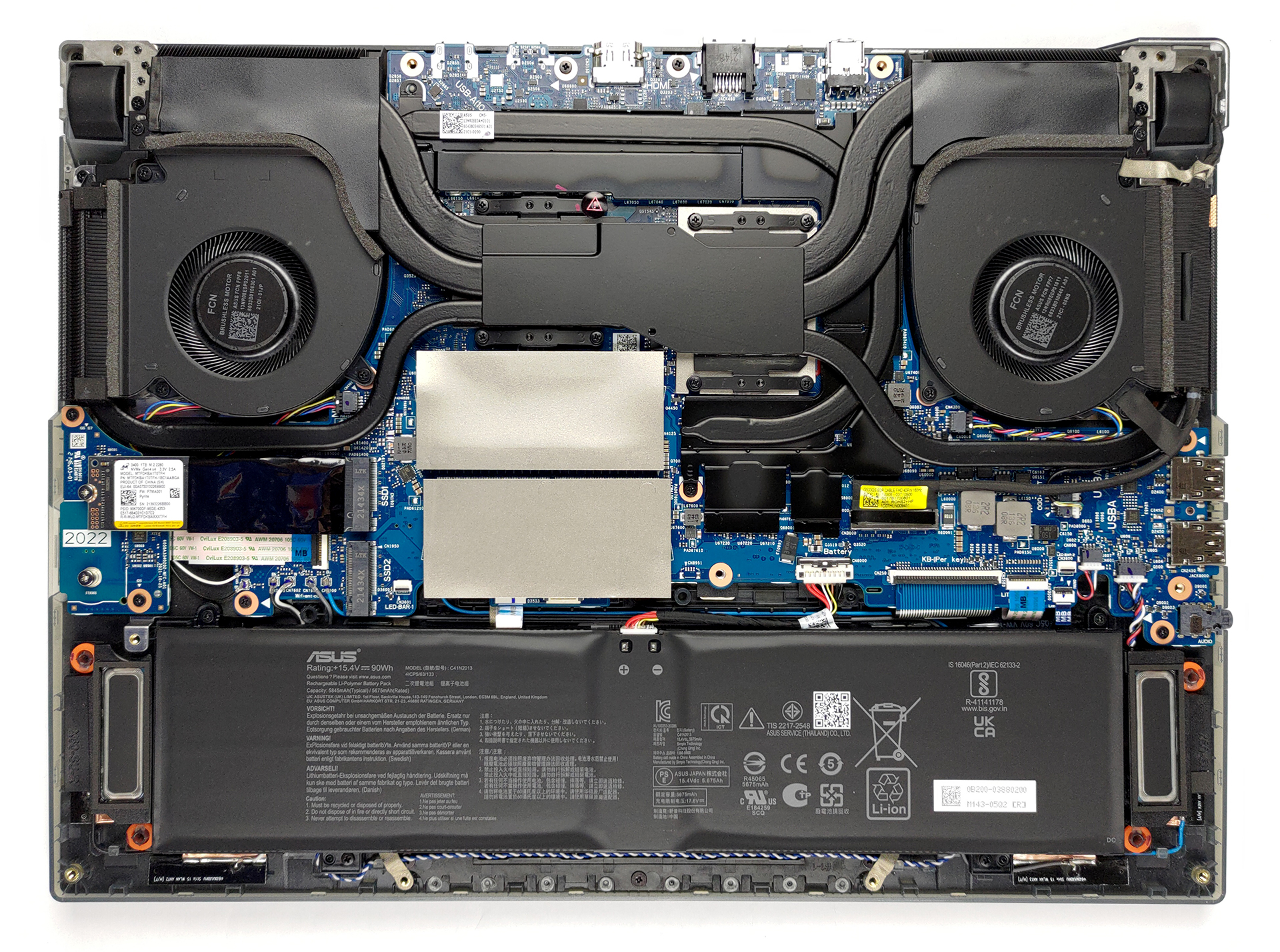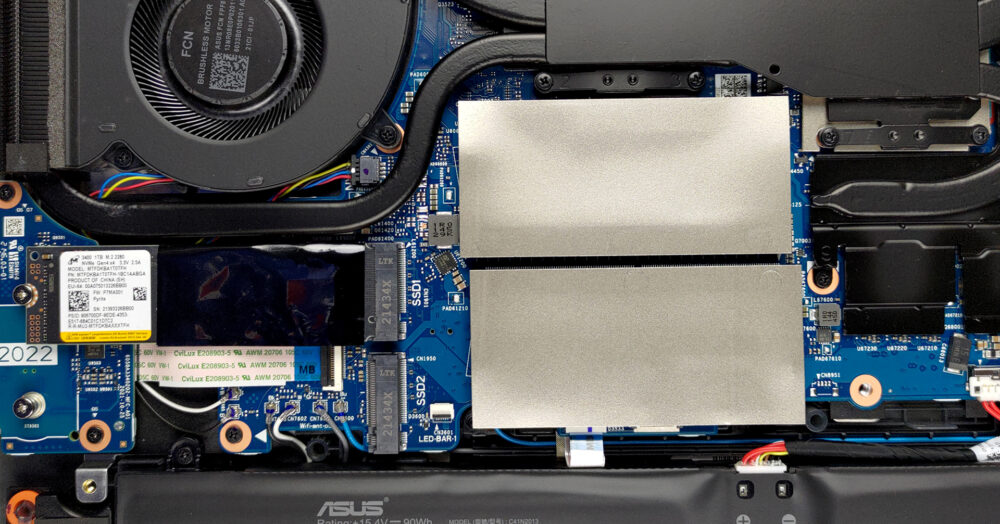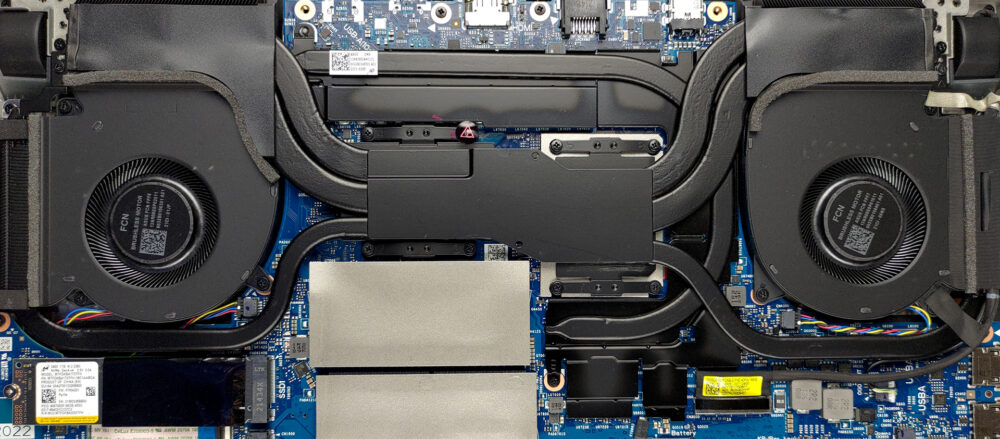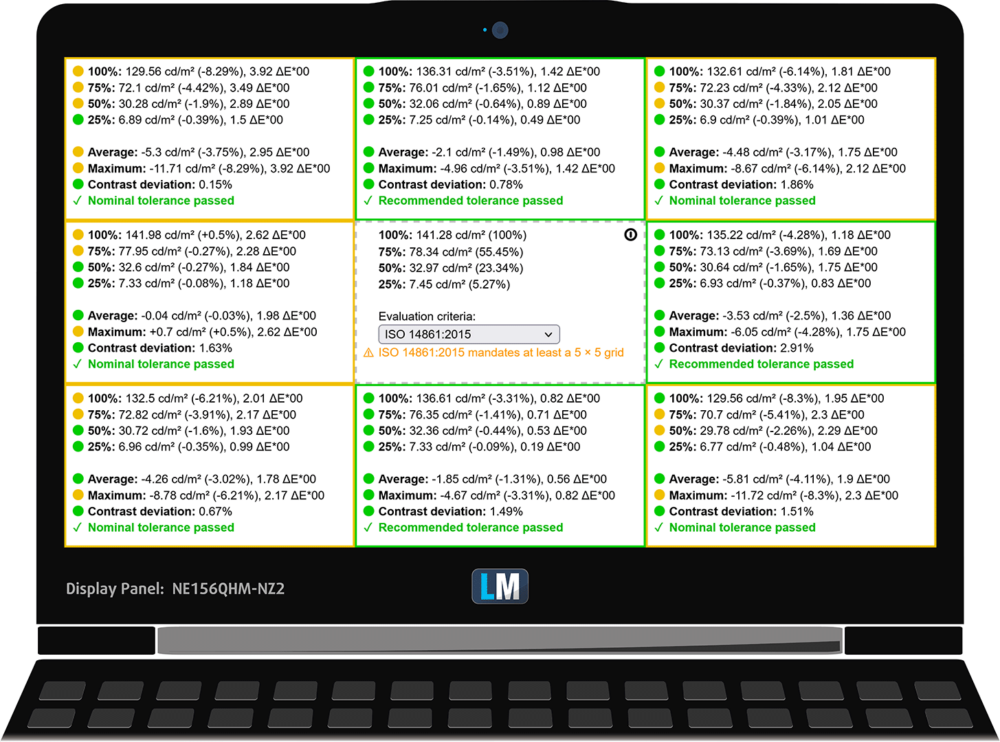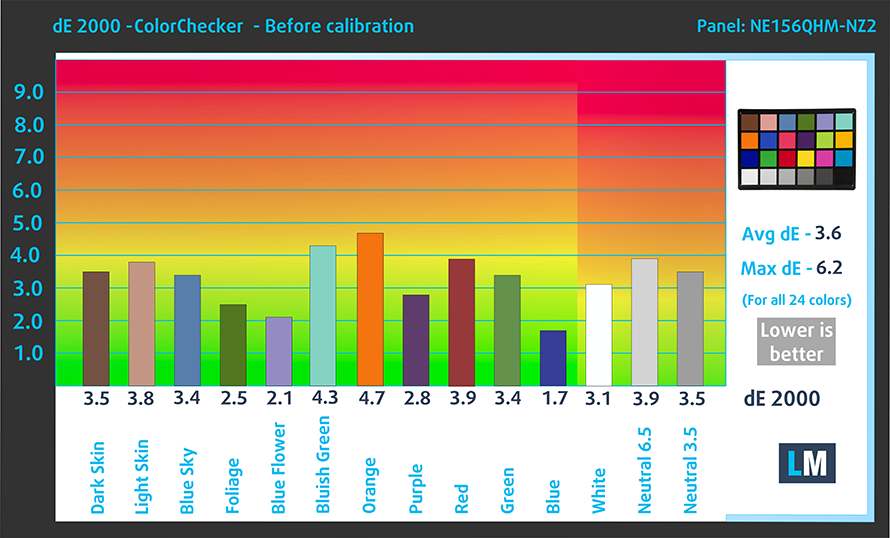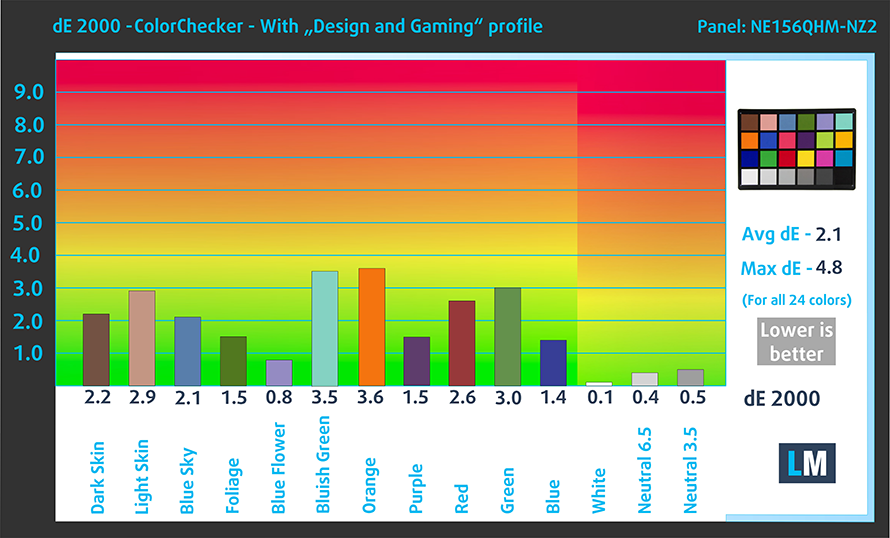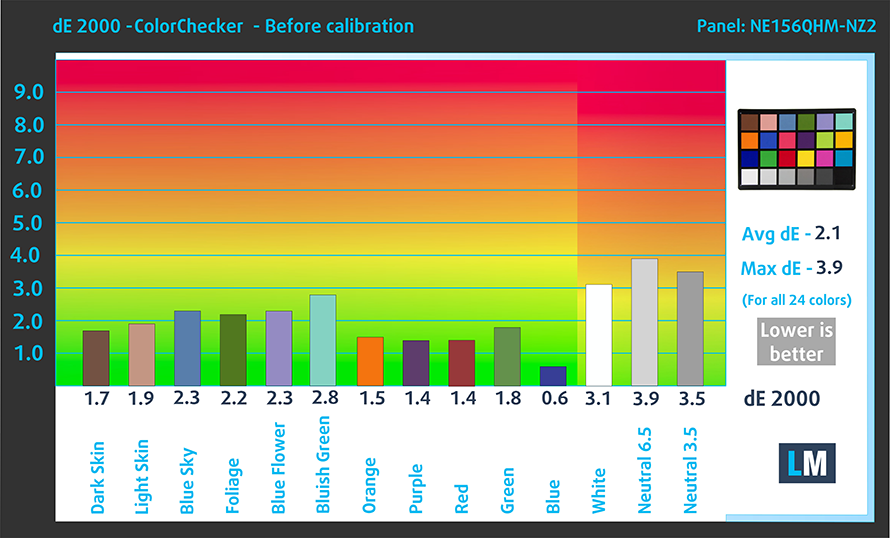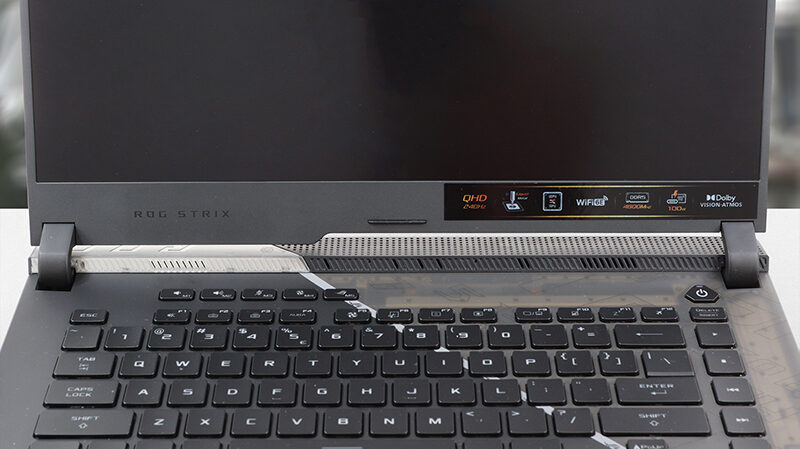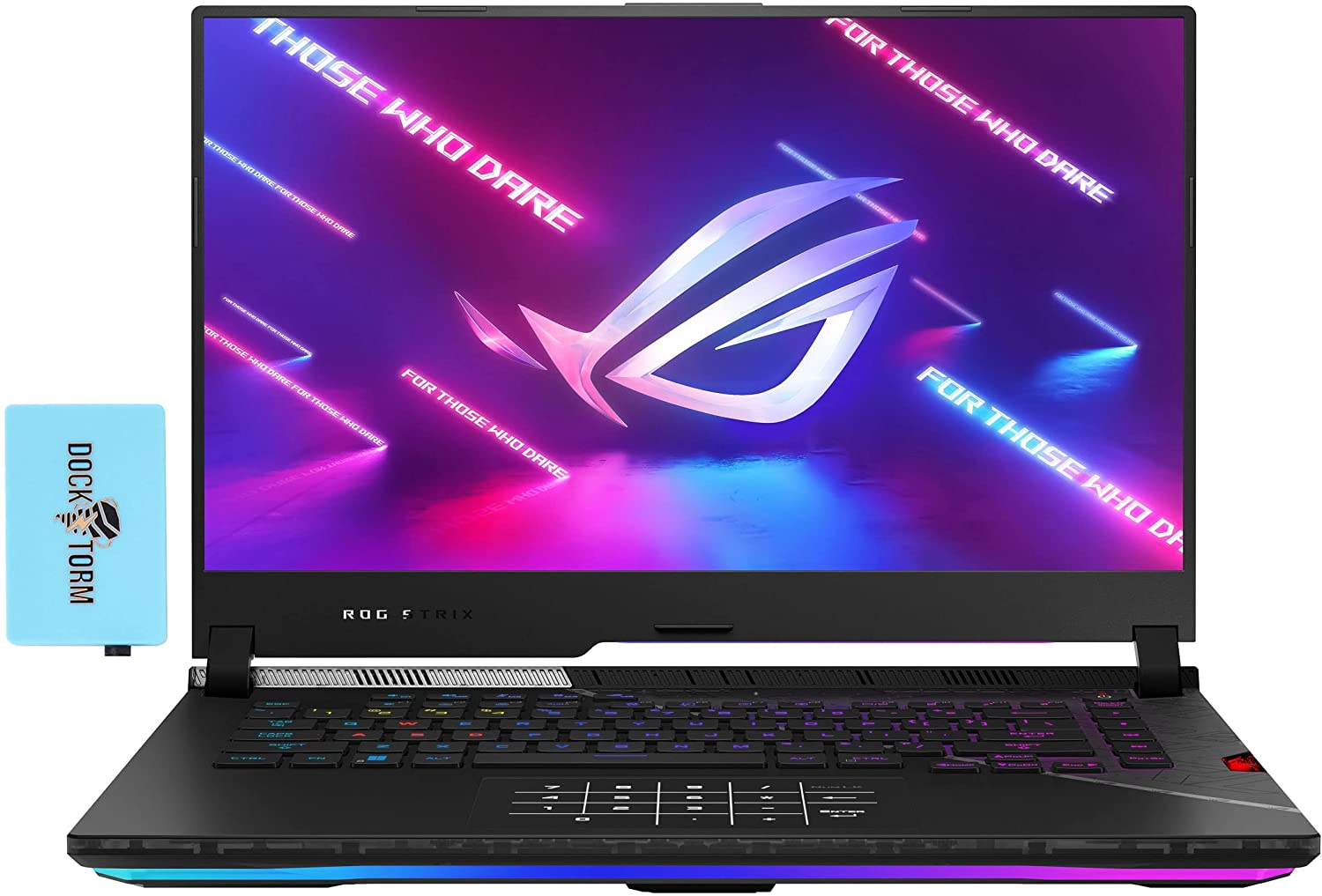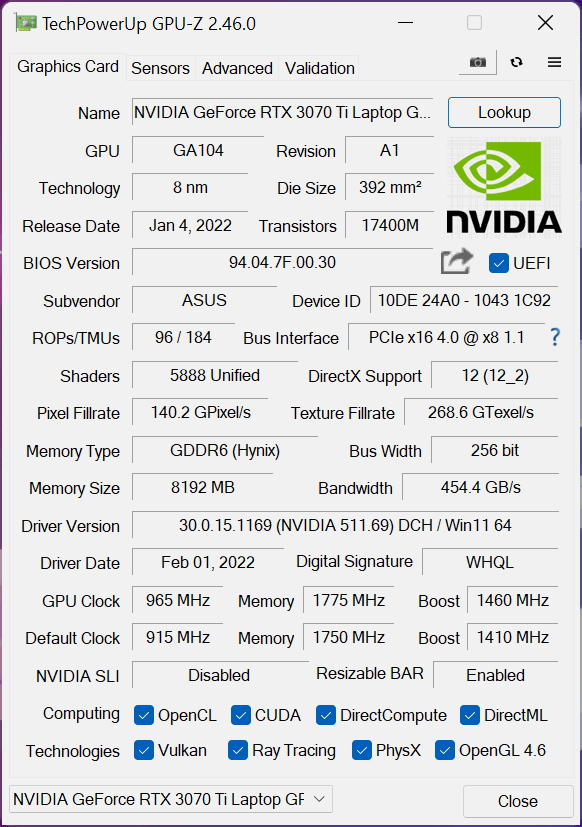ASUS ROG Strix SCAR 15 G533 (2022) review
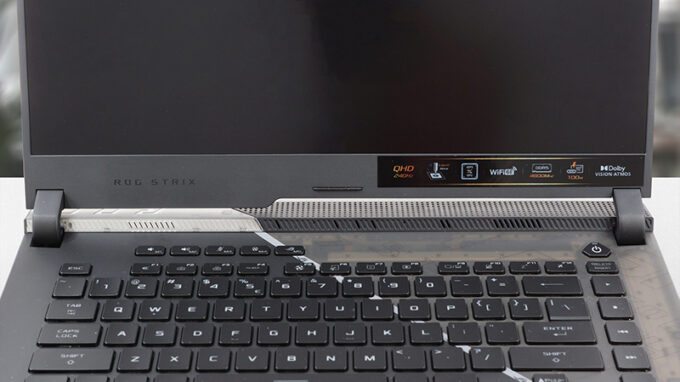 ASUS took its most gamer-centric notebook and made it better. One of the most unusual changes you’ll see is the switch from an AMD to an Intel processor. In fact, the ROG Strix SCAR 15 was running Intel CPUs in 2020, then switched to AMD in 2021, just to get back to Team Blue this year. This means that ASUS serves no one when it comes to pure performance, and as you can see in our Top Laptop CPU Ranking, Intel absolutely mopped the floor with AMD with Alder Lake.
ASUS took its most gamer-centric notebook and made it better. One of the most unusual changes you’ll see is the switch from an AMD to an Intel processor. In fact, the ROG Strix SCAR 15 was running Intel CPUs in 2020, then switched to AMD in 2021, just to get back to Team Blue this year. This means that ASUS serves no one when it comes to pure performance, and as you can see in our Top Laptop CPU Ranking, Intel absolutely mopped the floor with AMD with Alder Lake.
Enough for the evergreen battle of the CPU manufacturers for now. Let’s give the ROG Strix SCAR 15 G533 (2022) the full attention. Something, it truly deserves. As one of the most important things about a portable computer, the display needs to be spot on. Here, you have two options. A 300Hz Full HD IPS panel carried down from last year, or a 240Hz 1440p IPS display that builds on the 165Hz option from the year before. Both of the panels come with HDR support and Adaptive-Sync, which is great.
Thanks to the great GPUs, released last year, you can take full advantage of the WQHD panel. Nevertheless, there are two options that were released a couple of months ago, and you can find them inside the SCAR. Yes, we are talking about the RTX 3070 Ti, and the RTX 3080 Ti, both of which have a 150W TGP.
You can check the prices and configurations in our Specs System: https://laptopmedia.com/series/asus-rog-strix-scar-15-g533-2022/
Contents
Specs Sheet
- HDD/SSD
- up to 2000GB SSD
- M.2 Slot
- 2x 2280 PCIe NVMe 4.0 x4 See photo
- RAM
- up to 64GB
- OS
- Windows 11 Home, Windows 11 Pro, Windows 10 Home, Windows 10 Pro
- Battery
- 90Wh, 4-cell
- Body material
- Plastic / Polycarbonate, Aluminum
- Dimensions
- 354 xx 259 x 22.6 - 27.2 mm (13.94" x 0.00" x 10.20")
- Weight
- 2.40 kg (5.3 lbs)
- Ports and connectivity
- 2x USB Type-A
- 3.2 Gen 1 (5 Gbps)
- 1x USB Type-C
- 3.2 Gen 2 (10 Gbps), Power Delivery (PD), DisplayPort
- 1x USB Type-C
- Thunderbolt 4, DisplayPort
- HDMI
- 2.1
- Card reader
- Ethernet LAN
- 10, 100, 1000, 2500 Mbit/s
- Wi-Fi
- 802.11ax
- Bluetooth
- 5.2
- Audio jack
- 3.5mm Combo Jack
- Features
- Fingerprint reader
- Web camera
- Backlit keyboard
- Microphone
- Array Microphone with AI Noise Cancelling
- Speakers
- 4x Speakers, Smart Amp, Dolby Atmos
- Optical drive
- Security Lock slot
All ASUS ROG Strix SCAR 15 G533 (2022) configurations
What’s in the box?
Inside the package, you will find either a 240W or a 280W power brick, depending on the configuration you get. Additionally, there are the mandatory manuals, as well as an envelope, housing the Keystone II. Furthermore, you get two complementary Armor caps.
Design and construction
This laptop’s design is made with the gamer in mind. However, it features some sleek elements, like the metal lid. We find it pretty refreshing, that you can customize your notebook with a choice of Armor Caps – this is the shroud sitting below the lid. Here, you can find the 3D model for the caps, which will let you customize and 3D print your own Armor Cap.
You have to keep in mind that this machine is not super thin and light, but it’s also not super thick. It has a profile that goes from 22.7 up to 27.2mm, while the weight is 2.40 kilos. Its construction is really solid. As you can see, the device is absolutely crammed with RGB. The back ROG logo glows, an LED strip on the bottom panel shines, and the keyboard has a Per-Key RGB backlight. All of them can be configured with Aura Sync.
Thankfully, the lid opens easily with a single hand. It sports extremely thin top and side bezels, while the bottom is pretty sizeable. Unfortunately, the super-thin top border means that you don’t get a Web camera. However, ASUS offers a separate camera as a bundle with some models, so keep an eye out for them.
Next comes the keyboard. You see, this is a 15-inch laptop with very slim display bezels. This means that if you want to maximize the keyboard experience, you have to omit the NumPad. However, some people still like having one, and this is why ASUS has decided to bring the NumperPad touchpad from the ZenBook laptops to this machine.
The unit is very comfortable with a smooth surface and very accurate tracking. What is even better is the keyboard. It sports long key travel and clicky feedback, which is great for the gamers out there. By the way, a portion of the base is transparent, which doesn’t reveal much, but boy does it look cool!
A quick look at the bottom panel reveals the location of the speaker cutouts, as well as the ventilation grill. It has holes in strategic locations, ensuring a good airflow over some vital components. Respectively, the hot air gets exhausted through four vents on the back.
Ports
On the left side of the notebook, there are two USB Type-A 3.2 (Gen. 1) ports, as well as an audio jack. On the back, you get a USB Type-C 3.2 (Gen. 2) port, which supports DisplayPort and PowerDelivery, a Thunderbolt 4 connector, an HDMI 2.1 connector, a 2.5G LAN port, and the power plug.
Disassembly, upgrade options, and maintenance
There are 10 Phillips-head screws that hold the bottom panel, plus one captive screw, that gently pops the edge from the chassis. This is where you can start the prying process. Before you remove the panel from the chassis, locate the two ribbon cables, which connect the LED strips to the motherboard, and unplug them.
Inside, we see a 90Wh battery pack. It lasts for 11 hours of Web browsing, or 7 hours of video playback. To remove it, unplug the connector from the motherboard, and undo all four Phillips-head screws.
Here, we see two SODIMM slots, which work with DDR5 memory. Storage-wise, you get two M.2 PCIe x4 Gen 4 slots.
As for the cooling, there is one heat pipe shared between the processor and the GPU, with two more dedicated to each of them. They are connected to four heat sinks, where two fans dissipate the heat. A sixth heat pipe is cooling the graphics memory and the VRMs, while the CPU sports a liquid metal thermal compound.
Display quality
ASUS ROG Strix SCAR 15 G533 (2022) in the configuration we tested has a 240Hz QHD panel – BOE NE156QHM-NZ2 (BOE0A55). Its diagonal is 15.6″ (39.62 cm), and the resolution is 2560 х 1440 pixels. The screen ratio is 16:9, and we are looking at a pixel density of – 188 ppi, and a pitch of 0.13 х 0.13 mm. The screen turns into Retina when viewed at distance equal to or greater than 46cm (18″) (from this distance one’s eye stops differentiating the separate pixels, and it is normal for looking at a laptop).
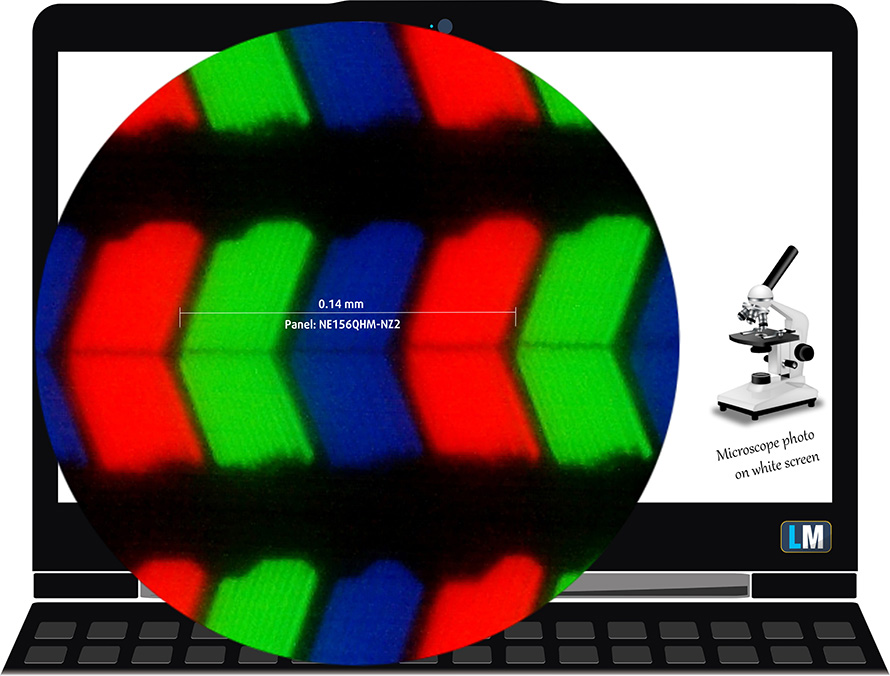
Viewing angles are excellent. We offer images at 45° to evaluate image quality.
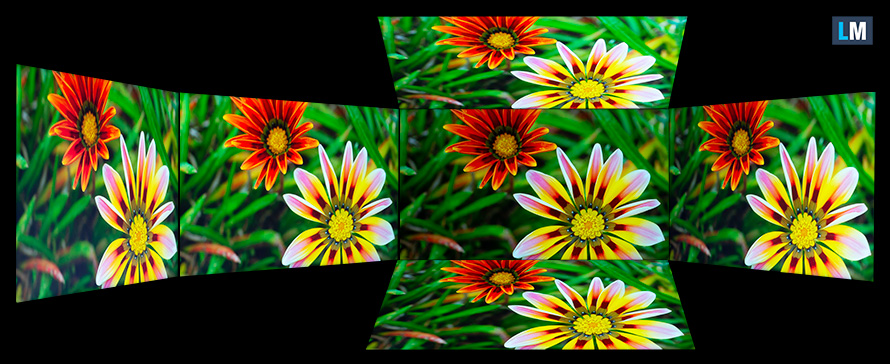
Also, a video with locked focus and exposure.
We measured a maximum brightness of 346 nits in the middle of the screen and 332 nits as an average for the whole area, with a maximum deviation of 9%. The Correlated Color Temperature on a white screen is 6360K – slightly warmer than the optimal for the sRGB standard of 6500K.
In the illustration below you can see how the main display performs from a uniformity perspective. In other words, the leakage of light from the light source.
Values of dE2000 over 4.0 should not occur, and this parameter is one of the first you should check if you intend to use the laptop for color-sensitive work. The contrast ratio is good – 1030:1.
To make sure we are on the same page, we would like to give you a little introduction to the sRGB color gamut and the Adobe RGB. To start, there’s the CIE 1976 Uniform Chromaticity Diagram that represents the visible specter of colors by the human eye, giving you a better perception of the color gamut coverage and the color accuracy.
Inside the black triangle, you will see the standard color gamut (sRGB) that is being used by millions of people on HDTV and on the web. As for the Adobe RGB, this is used in professional cameras, monitors, etc for printing. Basically, colors inside the black triangle are used by everyone and this is the essential part of the color quality and color accuracy of a mainstream notebook.
Still, we’ve included other color spaces like the famous DCI-P3 standard used by movie studios, as well as the digital UHD Rec.2020 standard. Rec.2020, however, is still a thing of the future and it’s difficult for today’s displays to cover that well. We’ve also included the so-called Michael Pointer gamut, or Pointer’s gamut, which represents the colors that naturally occur around us every day.
The yellow dotted line shows ASUS ROG Strix SCAR 15 G533 (2022)’s color gamut coverage.
Its display covers almost 100% of the sRGB/ITU-R BT.709 (web/HDTV standard) in CIE1976, and 99% of the DCI-P3 color gamut, resulting in a vibrant and punchy image.
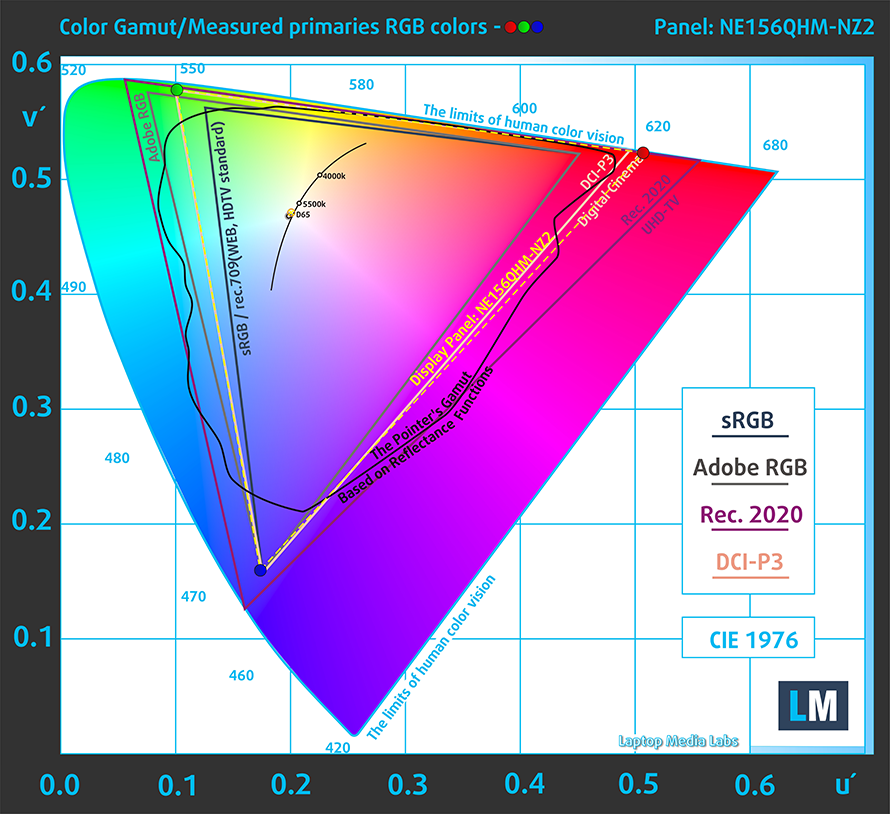
Our “Design and Gaming” profile delivers optimal color temperature (6500K) at 140 cd/m2 luminance and sRGB gamma mode.
We tested the accuracy of the display with 24 commonly used colors like light and dark human skin, blue sky, green grass, orange, etc. You can check out the results in factory condition and also, with the “Design and Gaming” profile.
Below you can compare the scores of ASUS ROG Strix SCAR 15 G533 (2022) with the default settings (left), and with the “Gaming and Web design” profile (right).
We also compare the scores of ASUS ROG Strix SCAR 15 G533 (2022) with the default settings (left), and with the “Gaming and Web design” profile (right) against the P3-D65 color space.
The next figure shows how well the display is able to reproduce really dark parts of an image, which is essential when watching movies or playing games in low ambient light.
The left side of the image represents the display with stock settings, while the right one is with the “Gaming and Web Design” profile activated. On the horizontal axis, you will find the grayscale, and on the vertical axis – the luminance of the display. On the two graphs below you can easily check for yourself how your display handles the darkest nuances but keep in mind that this also depends on the settings of your current display, the calibration, the viewing angle, and the surrounding light conditions.
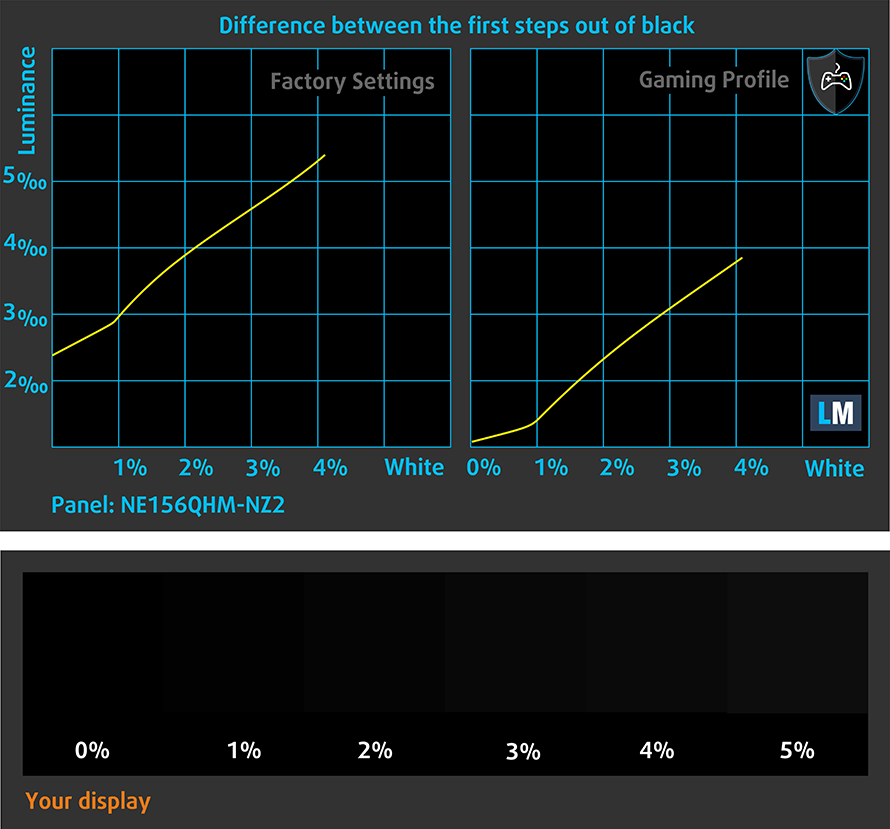
Response time (Gaming capabilities)
We test the reaction time of the pixels with the usual “black-to-white” and “white-to-black” method from 10% to 90% and vice versa. Display OverDrive On.
We recorded Fall Time + Rise Time = 9 ms.
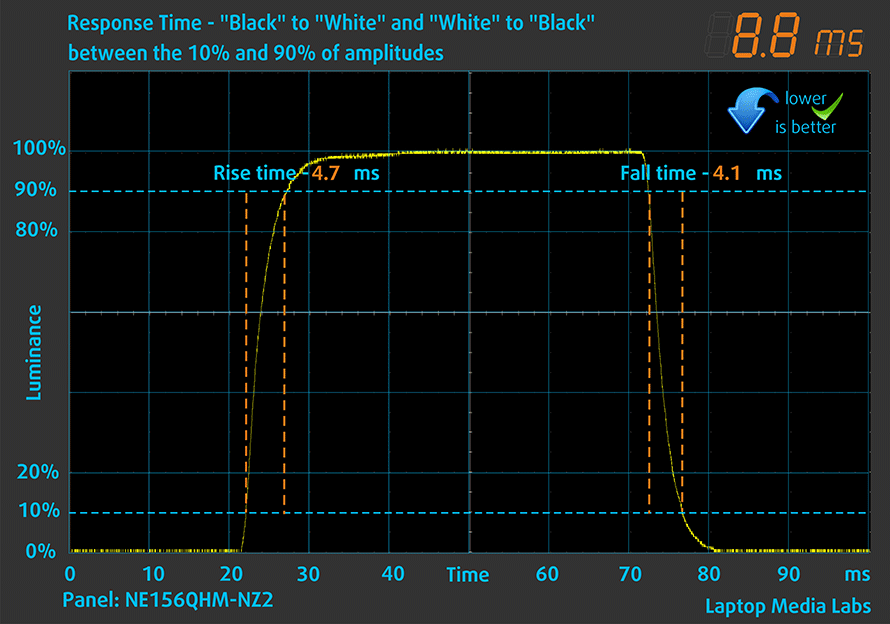
After that, we test the reaction time of the pixels with the usual “Gray-to-Gray” method from 50% White to 80% White and vice versa between 10% and 90% of the amplitude.
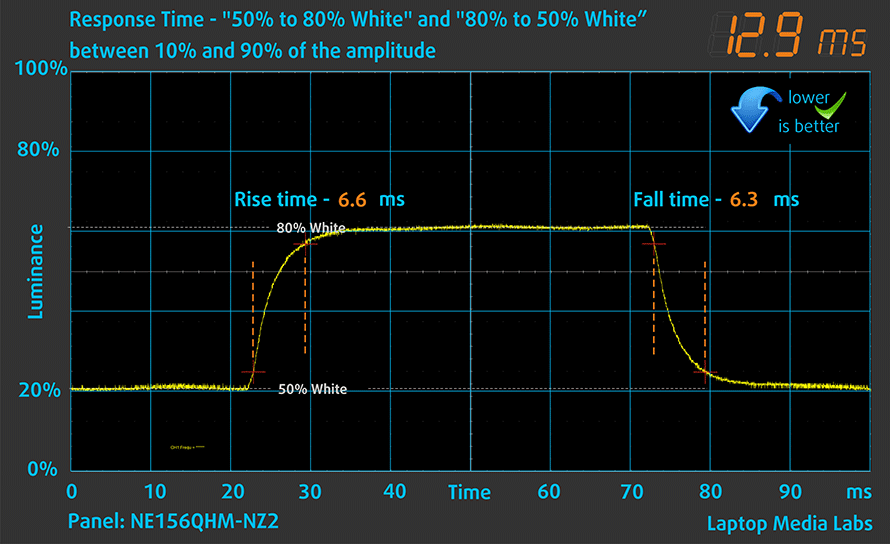
PWM (Screen flickering)
Pulse-width modulation (PWM) is an easy way to control monitor brightness. When you lower the brightness, the light intensity of the backlight is not lowered, but instead turned off and on by the electronics with a frequency indistinguishable to the human eye. In these light impulses, the light/no-light time ratio varies, while brightness remains unchanged, which is harmful to your eyes. You can read more about that in our dedicated article on PWM.
ASUS ROG Strix SCAR 15 G533 (2022)’s display doesn’t use PWM to adjust its brightness at any point. This means it is comfortable for long gaming sessions without harming your eyes in this aspect.
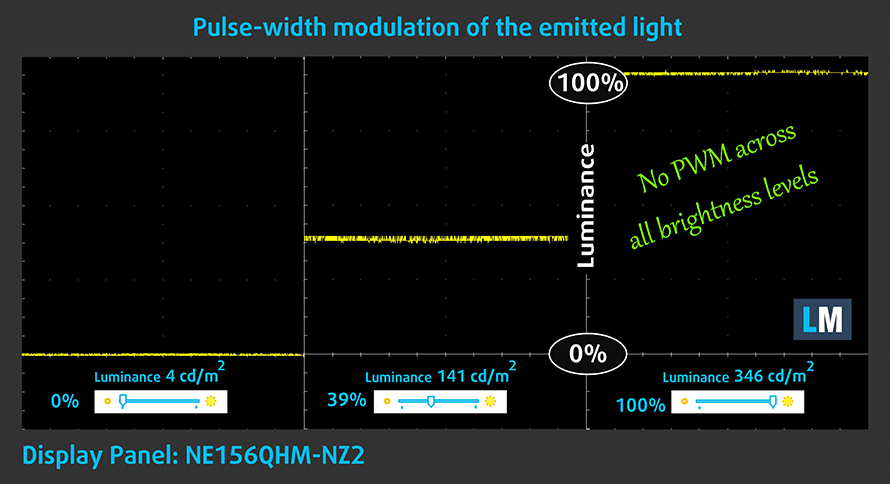
Blue light emissions
Installing our Health-Guard profile not only eliminates PWM but also reduces the harmful Blue Light emissions while keeping the colors of the screen perceptually accurate. If you’re not familiar with the Blue light, the TL;DR version is – emissions that negatively affect your eyes, skin, and your whole body. You can find more information about that in our dedicated article on Blue Light.
Buy our profiles
Since our profiles are tailored for each individual display model, this article and its respective profile package are meant for ASUS ROG Strix SCAR 15 G533 (2022) configurations with 15.6″ QHD IPS BOE NE156QHM-NZ2 (BOE0A55).
*Should you have problems with downloading the purchased file, try using a different browser to open the link you’ll receive via e-mail. If the download target is a .php file instead of an archive, change the file extension to .zip or contact us at [email protected].
Read more about the profiles HERE.
In addition to receiving efficient and health-friendly profiles, by buying LaptopMedia's products you also support the development of our labs, where we test devices in order to produce the most objective reviews possible.

Office Work
Office Work should be used mostly by users who spend most of the time looking at pieces of text, tables or just surfing. This profile aims to deliver better distinctness and clarity by keeping a flat gamma curve (2.20), native color temperature and perceptually accurate colors.

Design and Gaming
This profile is aimed at designers who work with colors professionally, and for games and movies as well. Design and Gaming takes display panels to their limits, making them as accurate as possible in the sRGB IEC61966-2-1 standard for Web and HDTV, at white point D65.

Health-Guard
Health-Guard eliminates the harmful Pulse-Width Modulation (PWM) and reduces the negative Blue Light which affects our eyes and body. Since it’s custom tailored for every panel, it manages to keep the colors perceptually accurate. Health-Guard simulates paper so the pressure on the eyes is greatly reduced.
Get all 3 profiles with 33% discount
Sound
ASUS ROG Strix SCAR 15 G533 (2022)’s speakers produce a sound of very good quality. It is deep, with good maximum volume, while we spotted no deviations across the entire frequency spectrum.
Drivers
All drivers and utilities for this notebook can be found here: https://rog.asus.com/laptops/rog-strix/rog-strix-scar-15-2022-series/helpdesk_download
Battery
Now, we conduct the battery tests with the Windows Better performance setting turned on, screen brightness adjusted to 120 nits, and all other programs turned off except for the one we are testing the notebook with.
In order to simulate real-life conditions, we used our own script for automatic web browsing through over 70 websites.

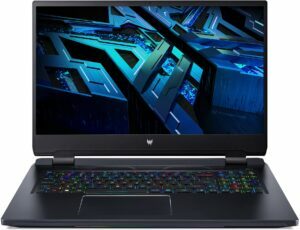
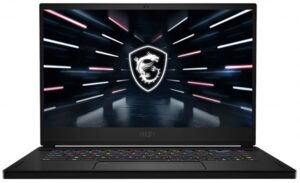
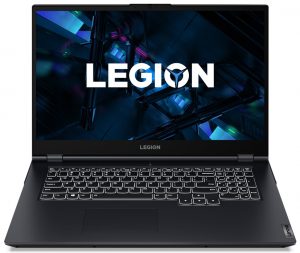
For every test like this, we use the same video in HD.




CPU options
Currently, you can find this notebook with the Core i7-12700H or Core i9-12900H.
Results are from the Cinebench 20 CPU test (the higher the score, the better)
Results are from our Photoshop benchmark test (the lower the score, the better)
GPU options
The graphics options include the RTX 3060 (140W), RTX 3070 Ti (150W), RTX 3080 (150W), and RTX 3080 Ti (150W).
Results are from the 3DMark: Time Spy (Graphics) benchmark (higher the score, the better)
Results are from the 3DMark: Fire Strike (Graphics) benchmark (higher the score, the better)
Results are from the 3DMark: Wild Life benchmark (higher the score, the better)
Results are from the Unigine Superposition benchmark (higher the score, the better)
ASUS ROG Strix SCAR 15 G533 (2022) GPU variants
Here you can see an approximate comparison between the GPUs that can be found in the ASUS ROG Strix SCAR 15 G533 (2022) models on the market. This way you can decide for yourself which ASUS ROG Strix SCAR 15 G533 (2022) model is the best bang for your buck.
Note: The chart shows the cheapest different GPU configurations so you should check what the other specifications of these laptops are by clicking on the laptop’s name / GPU.
Results are from the 3DMark: Time Spy (Graphics) benchmark (higher the score, the better)
Results are from the 3DMark: Fire Strike (Graphics) benchmark (higher the score, the better)
Results are from the 3DMark: Wild Life (Graphics) benchmark (higher the score, the better)
Results are from the Unigine Superposition benchmark (higher the score, the better)
Gaming tests
| Metro Exodus | Full HD, Low (Check settings) | Full HD, High (Check settings) | Full HD, Extreme (Check settings) |
|---|---|---|---|
| Average FPS | 185 fps | 98 fps | 49 fps |
| Borderlands 3 | Full HD, Medium (Check settings) | Full HD, High (Check settings) | Full HD, Badass (Check settings) |
|---|---|---|---|
| Average fps | 160 fps | 123 fps | 102 fps |
| Tom Clancy’s Ghost Recon Wildlands | Full HD, High (Check settings) | Full HD, Very High (Check settings) | Full HD, Ultra (Check settings) |
|---|---|---|---|
| Average | 145 fps | 126 fps | 83 fps |

| Shadow of the Tomb Raider (2018) | Full HD, Medium (Check settings) | Full HD, High (Check settings) | Full HD, Highest (Check settings) |
|---|---|---|---|
| Average | 166 fps | 157 fps | 108 fps |
Temperatures and comfort
Max CPU load
In this test we use 100% on the CPU cores, monitoring their frequencies and chip temperature. The first column shows a computer’s reaction to a short load (2-10 seconds), the second column simulates a serious task (between 15 and 30 seconds), and the third column is a good indicator of how good the laptop is for long loads such as video rendering.
Average P-core frequency; Average E-core frequency; CPU temp.; Package Power
| Intel Core i9-12900H (45W TDP) | 0:02 – 0:10 sec | 0:15 – 0:30 sec | 10:00 – 15:00 min |
|---|---|---|---|
| ASUS ROG Strix SCAR 15 G533 (2022) | 4.00 GHz @ 3.06 GHz @ 77°C @ 126W | 3.97 GHz @ 3.04 GHz @ 85°C @ 125W | 3.93 GHz @ 2.96 GHz @ 86°C @ 121W |
| ASUS ROG Flow Z13 (GZ301) | 3.54 GHz @ 2.68 GHz @ 64°C @ 95W | 3.04 GHz @ 2.48 GHz @ 70°C @ 83W | 2.45 GHz @ 2.07 GHz @ 67°C @ 50W |
We were very eager to see how 12th Gen will hold up when it’s properly cooled and has some liquid metal treatment. Well, the results are in, and they are incredible. It runs its P-cores at nearly 4.00 GHz for the entirety of the test, while the E-cores barely drop below 3.00 GHz. All of that by sustaining 121W in long runs. This cooling setup is a beast.
Real-life gaming
| NVIDIA GeForce RTX 3070 Ti | GPU frequency/ Core temp (after 2 min) | GPU frequency/ Core temp (after 30 min) | GPU frequency/ Core temp (Max Fan) |
|---|---|---|---|
| ASUS ROG Strix SCAR 15 G533 (2022) | 1631 MHz @ 80°C @ 149W | 1614 MHz @ 81°C @ 149W | – |
| Acer Predator Helios 300 (PH317-56) | 1637 MHz @ 70°C @ 149W | 1628 MHz @ 72°C @ 149W | 1646 MHz @ 67°C @ 150W |
| MSI Stealth GS66 (12Ux) | 1277 MHz @ 71°C @ 92W | 1250 MHz @ 75°C @ 91W | 1314 MHz @ 64°C @ 92W |
| Acer Predator Triton 500 SE (PT516-52s) | 1270 MHz @ 87°C @ 115W | 1200 MHz @ 87°C @ 105W | 1320 MHz @ 87°C @ 113W |
Although the laptop is able to run at roughly the same clocks as those of the Predator Helios 300 (PH317-56), the latter’s thermal capacity seems to be significantly bigger. It runs nearly 10°C lower.
Gaming comfort
What is significantly better about the new SCAR 15 is its comfort. The laptop is not too loud even in the “Turbo” performance mode, while the keyboard also remains pretty cool.
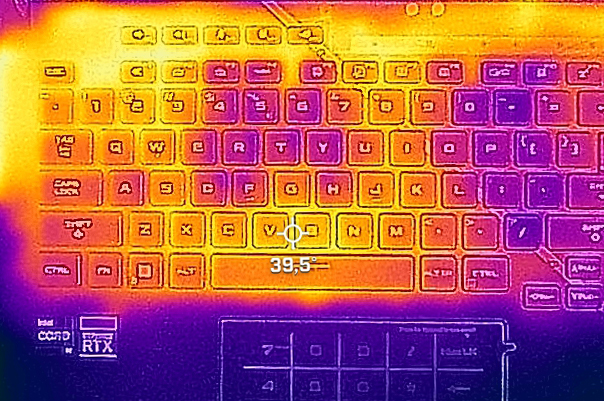
Verdict
 First, we’d like to compliment ASUS on choosing right in regards to the processor manufacturer. Intel offers the best CPUs right now, and risking it before seeing real-world results (when ASUS was still on the drawing board with the SCAR 15 for this year), is a bold move.
First, we’d like to compliment ASUS on choosing right in regards to the processor manufacturer. Intel offers the best CPUs right now, and risking it before seeing real-world results (when ASUS was still on the drawing board with the SCAR 15 for this year), is a bold move.
Nevertheless, the company has done enough on its own to provide you with the best gaming experience. First and foremost, you get a 150W graphics card (or a 140W if you get the RTX 3060). If we were in your place, we would at least go for the RTX 3070 Ti, so that you can take full advantage of the higher resolution of the WQHD panel.
ASUS ROG Strix SCAR 15 G533 (2022)’s display in our configuration has a WQHD resolution, which shows a lot of detail. It has comfortable viewing angles good contrast ratio and its backlight doesn’t flicker. It is one of the top-tier panels for gaming due to its 240Hz refresh rate, quick pixel response times, and the ability to use OverDrive in the software. Not to mention the fact that it fully covers the sRGB and DCI-P3 color gamuts, while the color accuracy with our Gaming and Web design profile is great.
In addition, you get HDR support, as well as Adaptive-Sync for less tear in fast-paced gaming. Interestingly, the Armoury Crate offers a function that allows you to lower the refresh rate of the panel to save battery. Thanks to that, you get about 11 hours of Web browsing or 7 hours of video playback on a single charge.
But if you don’t need the battery life, you can force the display to run at 240Hz, turn on OverDrive for faster pixel response times, and then… put the MUX switch in the “Discrete Graphics” position. That way, you’ll have the RTX GPU directly connected to the internal display, thus receiving the full bandwidth.
Speaking of bandwidth, this device comes with DDR5 memory, with an option to go all the way to 64GB in dual-channel mode. You also get two M.2 PCIe x4 Gen 4 slots for ultra-fast storage.
Other features include Wi-Fi 6E and 2.5G Ethernet connection, both of which ensure a stable and ultra-fast online experience. That is, of course, if your Internet plan provides a fast-enough connection.
See, this is a laptop that is super strong on all fronts. The I/O is also very good, as you get a Thunderbolt 4 port, paired with another USB Type-C connector, and an HDMI 2.1 for a third external display output. The only things we would have wanted from this laptop would be an SD card reader and a Web Camera.
However, ASUS has its own way of making its laptops unique, and in this case, it is the Keystone, which lets you use it as a Performance preset, Customization preset, or shortcut that launches an App, or changes settings.
For what it’s worth, we would recommend this laptop with two out of two hands. The liquid metal thermal compound makes it a king in computational performance, while the TGP of the graphics card is perfectly calculated for a comfortable gaming experience.
You can check the prices and configurations in our Specs System: https://laptopmedia.com/series/asus-rog-strix-scar-15-g533-2022/
Pros
- 2x SODIMM + 2x M.2 PCIe x4 Gen 4 slots
- Bold design
- Liquid metal helps the CPU to sustain high clocks
- MUX switch
- Wi-Fi 6E, 2.5G Ethernet, Thunderbolt 4
- Covers 99% of the DCI-P3 color gamut and has accurate color representation with our Gaming and Web design profile (BOE NE156QHM-NZ2 (BOE0A55))
- Fast panel with quick response times (BOE NE156QHM-NZ2 (BOE0A55))
- PWM-free (BOE NE156QHM-NZ2 (BOE0A55))
- HDR + Adaptive-Sync (BOE NE156QHM-NZ2 (BOE0A55))
Cons
- Lacks a Web camera
- No SD card slot



